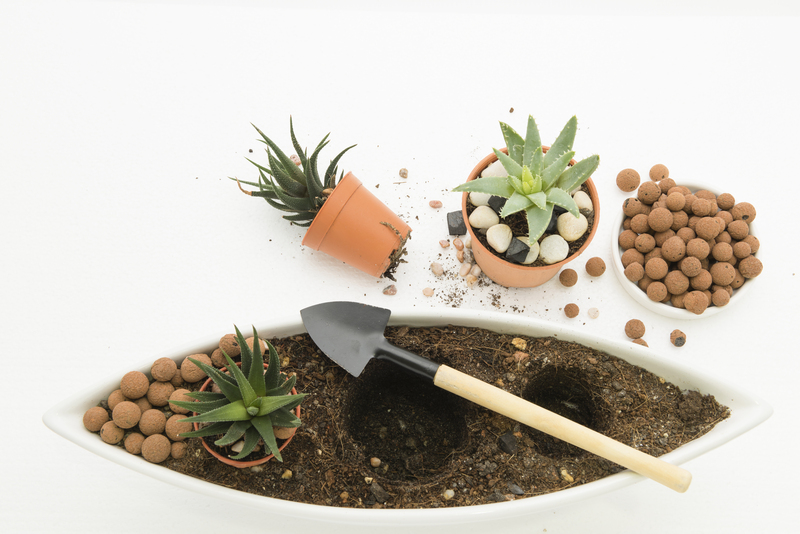Top Edible Wild UK Plants and Flowers
Posted on 25/10/2025
Introduction to Edible Wild Plants and Flowers in the UK
Foraging for wild plants and flowers has become increasingly popular in recent years, as many seek to reconnect with nature and discover tasty, free, and nutritious additions to their diet. The UK, with its diverse landscape and temperate climate, is home to numerous edible wild plants and flowers. Whether you're an experienced forager or a beginner, it's important to properly identify plants to avoid possible poisoning. Here, we explore the top edible wild plants and flowers you can find in the UK.

Top Edible Wild Plants in the UK
Nettle (Urtica dioica)
Nettles are abundant across the UK and highly nutritious. They are packed with vitamins A, C, iron, potassium, and calcium. To eat nettles, pick the young leaves from the top of the plant, typically in early spring. Blanching, cooking, or drying them will remove the sting. Use them in soups, teas, or as a replacement for spinach.
Wild Garlic (Allium ursinum)
Wild garlic, also known as ramsons, flourishes in damp, shady areas, often carpeting woodlands in spring. You can eat the leaves raw in salads, or use them in pesto, soups, and sauces. Wild garlic flowers are also edible and have a subtle garlic flavor.
Elderflower (Sambucus nigra)
Elderflowers bloom from late May to early July and are used to make elderflower cordial, jam, and fritters. The flowers contain a sweet, fragrant flavor. Make sure to pick fully blossomed flower heads and avoid toxic stems and leaves.
This edible wild plant, found in the Southwest of England, is similar to wild garlic. It has a strong onion-like aroma and can be used in a similar way to chives. Add it to salads, soups, and pasta dishes.
Edible Wild Flowers in the UK
Dandelion (Taraxacum officinale)
Dandelions are common and easy to identify. The leaves, flowers, and roots are all edible. Young leaves can be used in salads, while flower petals make an excellent addition to teas, wines, and honey. The roots can be roasted and ground to make a coffee substitute.
Violets (Viola spp.)
Violets bloom in spring and their flowers add a unique sweetness to dishes. They can be used to garnish salads, desserts, and drinks. The leaves are also edible when young and can be added to salads or cooked like spinach.
Cow Parsley (Anthriscus sylvestris)
Often mistaken for the poisonous hemlock, cow parsley is recognizable by its feathery leaves and small white flowers. It's safest consumed when young. The leaves, stems, and flowers have a faint parsley flavor and can be used to flavor soups and stews.
Pros and Cons of Foraging Edible Wild Plants and Flowers
Pros
- Free and sustainable food source: Foraging provides access to nutritious and free food straight from nature.
- Health benefits: Many wild plants are packed with vitamins, minerals, and antioxidants.
- Environmental benefits: Foraging promotes biodiversity and environmental awareness.
Cons
- Potential toxicity: Misidentifying plants can lead to serious health risks. Proper knowledge and identification are crucial.
- Ecological impact: Over-harvesting can damage local ecosystems. Responsible foraging practices are essential.
- Legal restrictions: Some areas have restrictions on foraging, so it's important to be aware of local laws.
Tips for Safe Foraging
- Always use a reputable guidebook or app to help identify plants correctly.
- Only pick plants that you are 100% sure are edible.
- Harvest sustainably by taking only what you need and ensuring the plant can continue to grow.
- Avoid foraging near busy roads or industrial sites to reduce the risk of contamination.
- Check legal regulations in your area before foraging.

Takeaways
Foraging for edible wild plants and flowers is a rewarding way to connect with nature, enhance your diet, and promote sustainability. The UK offers a wide variety of safe, edible wild plants such as nettles and wild garlic, and flowers like dandelions and violets. Proceed with caution, use proper identification tools, and follow responsible foraging practices.
Conclusion
Embracing the practice of foraging for edible wild plants and flowers can enrich your culinary experiences and foster a deeper connection with the natural world. With the wealth of information available and a mindful approach, you can safely explore this ancient and sustainable food source. Remember to forage responsibly, respecting the environment and legal guidelines to ensure this practice remains a viable and beneficial activity for everyone.



